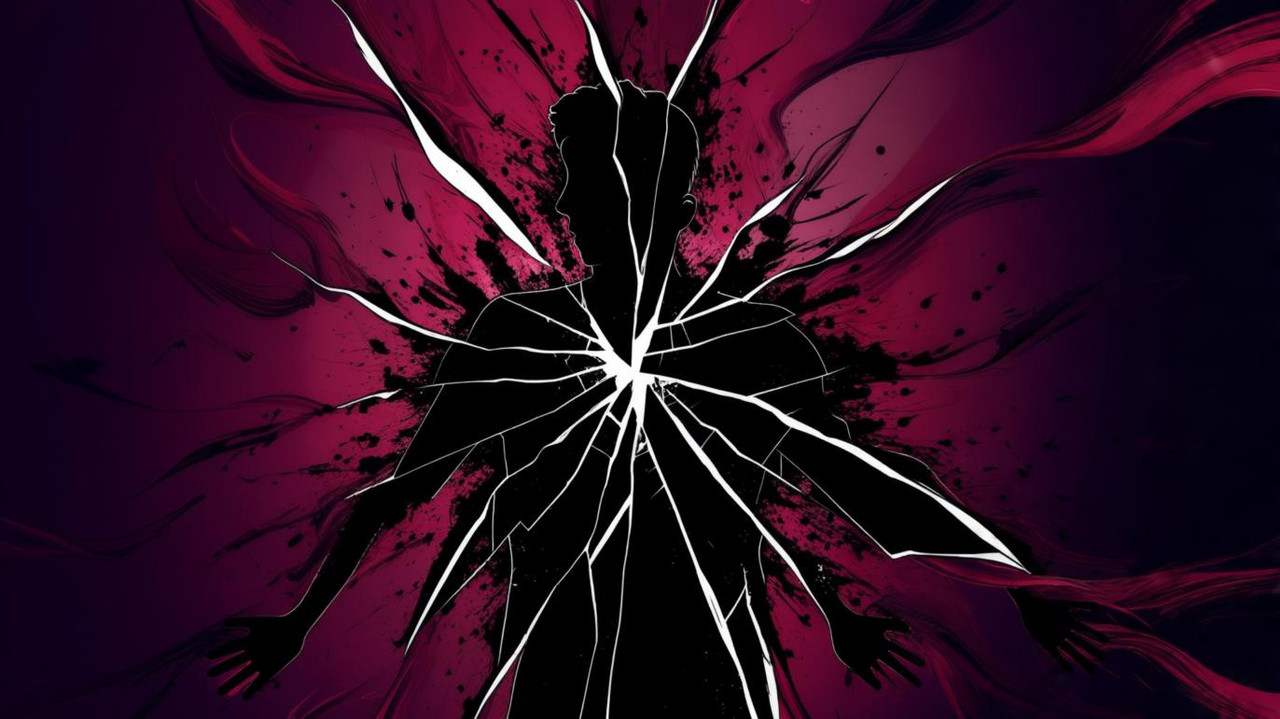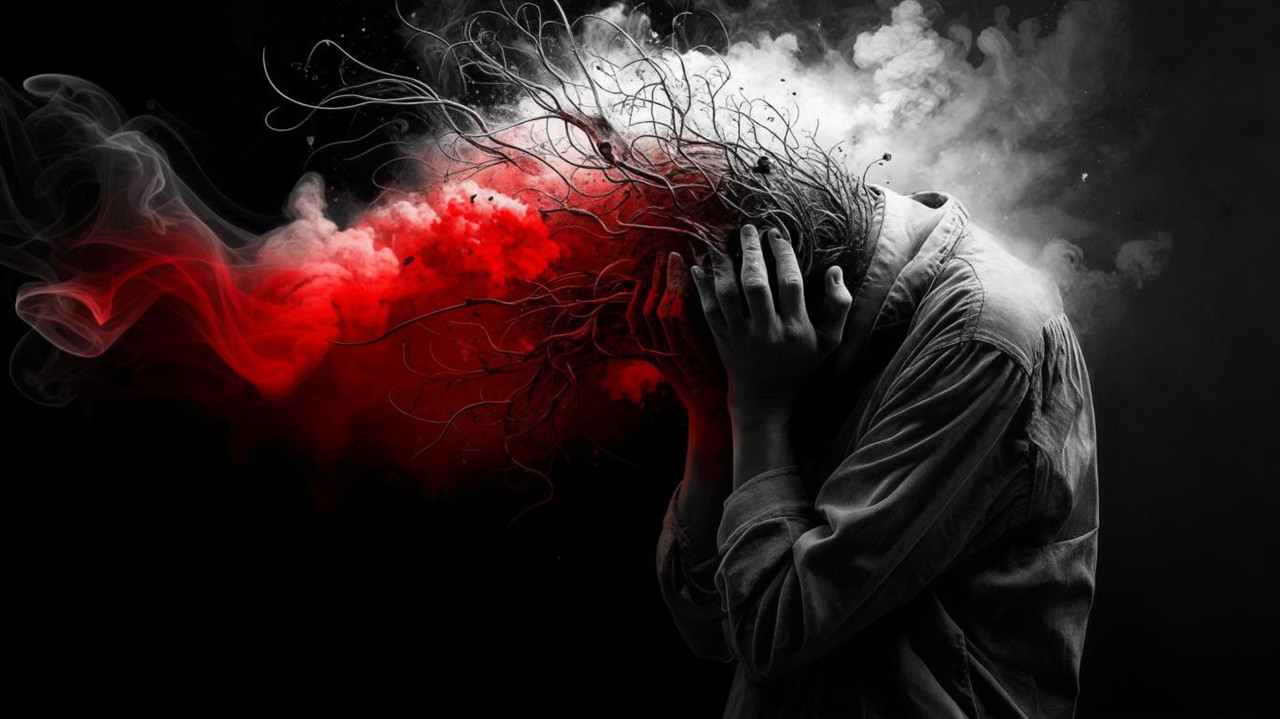Understanding Panic Disorder: Symptoms, Causes, and Effective Treatments
Panic disorder is a mental health condition that can profoundly impact an individual's life, often leaving them feeling overwhelmed and out of control. While many people experience moments of intense fear or anxiety, panic disorder goes beyond typical stress responses, involving recurrent, unexpected panic attacks and a persistent worry about having more. As a clinical psychologist specializing in anxiety disorders, my aim is to provide a clear, evidence-based understanding of this condition, helping you distinguish between a panic attack and panic disorder, explore its potential causes, and illuminate the most effective treatment paths available.
 |
| PANIC DISORDER |
What is Panic Disorder? Decoding the Experience
To truly understand panic disorder, it's crucial to first differentiate it from a single panic attack. A panic attack is an abrupt surge of intense fear or discomfort that reaches a peak within minutes. During this time, individuals experience a range of distressing physical and cognitive symptoms. These can include:
Palpitations, pounding heart, or accelerated heart rate
Sweating
Trembling or shaking
Sensations of shortness of breath or smothering
Feelings of choking
Chest pain or discomfort
Nausea or abdominal distress
Feeling dizzy, unsteady, light-headed, or faint
Chills or hot flushes
Paresthesias (numbness or tingling sensations)
Derealization (feelings of unreality) or depersonalization (being detached from oneself)
Fear of losing control or "going crazy"
Fear of dying
While these symptoms are undoubtedly terrifying, an isolated panic attack does not automatically signify panic disorder. According to the Diagnostic and Statistical Manual of Mental Disorders, Fifth Edition (DSM-5), panic disorder is diagnosed when an individual experiences recurrent, unexpected panic attacks followed by at least one month of one or both of the following:
Persistent concern or worry about additional panic attacks or their consequences (e.g., losing control, having a heart attack, "going crazy").
A significant maladaptive change in behavior related to the attacks (e.g., behaviors designed to avoid having panic attacks, such as avoidance of exercise or unfamiliar situations).
The "unexpected" nature of these attacks is key, meaning they occur without an obvious trigger. This unpredictability often fuels the persistent worry and avoidance behaviors characteristic of the disorder, making daily life incredibly challenging.
What Causes Panic Attacks and Panic Disorder? Unraveling the Roots
The development of panic disorder is complex, often involving a blend of genetic predispositions, neurobiological factors, and environmental influences. It's rarely attributable to a single cause but rather an interplay of various contributing elements. Understanding what causes panic attacks can offer valuable insight into managing the condition.
 |
| HOW PANIC ATTACK FEELS |
Genetic Predisposition
Research suggests that there is a genetic component to panic disorder. Individuals with a family history of anxiety disorders, including panic disorder, may have a higher likelihood of developing the condition themselves. This indicates a potential inherited vulnerability.
Brain Chemistry and Neurobiology
The brain plays a significant role in the manifestation of panic attacks and panic disorder. Key areas and neurotransmitters involved include:
The Amygdala: Often referred to as the brain's "fear center," the amygdala is responsible for processing emotions, particularly fear. In individuals with panic disorder, the amygdala may be hypersensitive, triggering alarm responses even in the absence of real danger.
Neurotransmitters: Imbalances in certain neurotransmitters, chemical messengers in the brain, are thought to contribute. Serotonin, a neurotransmitter that regulates mood, sleep, and anxiety, is often implicated. Dysregulation in its pathways can affect how the brain responds to stress. Other neurotransmitters like norepinephrine and GABA also play roles in the brain's fear circuitry.
The Fight-or-Flight Response: When faced with perceived danger, the body's sympathetic nervous system activates the "fight-or-flight" response, preparing the body to either confront or flee a threat. In panic disorder, this system can be overactive, leading to a false alarm that mimics real danger, even when none is present.
Environmental Factors and Life Experiences
Beyond biology, environmental stressors and life experiences can significantly contribute to the onset of panic disorder:
Major Life Stressors: Significant life transitions, financial difficulties, relationship problems, or job loss can increase vulnerability to panic attacks.
Traumatic Experiences: A history of trauma, such as abuse, neglect, or a major accident, can heighten an individual's susceptibility to developing anxiety disorders, including panic disorder.
Substance Use: Certain substances, including excessive caffeine, nicotine, and illicit drugs, can trigger or exacerbate panic attacks. Withdrawal from some medications or substances can also precipitate attacks.
Chronic Illness: Living with a chronic medical condition can increase stress and anxiety, potentially contributing to the development of panic disorder.
It's important to remember that these factors often interact, creating a unique pathway to the development of panic disorder for each individual.
Panic Disorder Treatment: Evidence-Based Pathways to Recovery
Panic disorder is considered highly treatable with appropriate therapeutic interventions. Effective interventions focus on reducing the frequency and intensity of panic attacks, managing the associated anticipatory anxiety, and improving overall quality of life. The primary panic disorder treatment options are psychotherapy, medication, or a combination of both.
Cognitive Behavioral Therapy (CBT)
Cognitive Behavioral Therapy (CBT) is considered the gold standard psychotherapy for panic disorder. It's a highly effective, short-term, goal-oriented therapy that helps individuals identify and change unhelpful thinking patterns and behaviors that contribute to their panic. Key components of CBT for panic disorder include:
Psychoeducation: Understanding the nature of panic attacks and panic disorder, including the physiological processes involved, can demystify the experience and reduce fear.
Cognitive restructuring is a therapeutic technique that enables individuals to identify, challenge, and reframe catastrophic thoughts commonly associated with panic attacks. For example, instead of thinking, "I'm having a heart attack," they learn to recognize, "These are simply intense anxiety symptoms, and they will pass."
Interoceptive Exposure: This involves intentionally inducing physical sensations similar to those experienced during a panic attack (e.g., spinning to induce dizziness, hyperventilating to induce shortness of breath) in a safe, controlled environment. The goal is to help individuals habituate to these sensations, learn that they are not dangerous, and reduce their fear response.
In Vivo Exposure: Gradually confronting situations or places that have been avoided due to fear of panic attacks (e.g., crowded places, public transportation). This helps to break the cycle of avoidance and regain functional independence.
Relaxation Techniques: Learning techniques such as diaphragmatic breathing and progressive muscle relaxation can help manage the physical symptoms of anxiety and panic.
CBT provides individuals with practical tools and strategies to manage their symptoms and regain a sense of control over their lives.
Medication
Medication can be a valuable component of panic disorder treatment, especially for individuals experiencing severe or frequent panic attacks. They often work by rebalancing brain chemistry. Common classes of medications include:
Selective Serotonin Reuptake Inhibitors (SSRIs): These are typically the first-line medication treatment for panic disorder. SSRIs like sertraline (Zoloft), fluoxetine (Prozac), paroxetine (Paxil), and escitalopram (Lexapro) work by increasing serotonin levels in the brain, which can help regulate mood and reduce anxiety. It may take several weeks for SSRIs to take full effect, and they are generally prescribed for longer-term management.
Benzodiazepines: Medications such as alprazolam (Xanax) and clonazepam (Klonopin) are fast-acting and can quickly reduce the severity of a panic attack. However, due to their potential for dependence and withdrawal symptoms, they are typically prescribed for short-term use during acute episodes or while awaiting the full effect of SSRIs.
Medication decisions should always be made in consultation with a psychiatrist or a medical doctor, considering individual health profiles and potential side effects.
Lifestyle Adjustments and Self-Care
While not standalone treatments, lifestyle adjustments can significantly complement therapy and medication:
Engaging in regular physical activity can significantly reduce stress and anxiety, making it a powerful tool for emotional well-being.
Balanced Diet: Nutritional choices can impact mood and energy levels.
Adequate Sleep: Sleep deprivation can exacerbate anxiety.
Mindfulness and Meditation: These practices can help individuals stay present and manage anxious thoughts.
Reducing or avoiding caffeine and alcohol can help prevent the onset or worsening of anxiety symptoms, as both substances can overstimulate the nervous system
Strong Support System: Connecting with friends, family, or support groups can provide comfort and understanding.
Panic disorder is a challenging condition, but with the right understanding and evidence-based treatment, recovery is not only possible but highly probable. If you or someone you know is struggling with panic attacks or panic disorder, reaching out to a mental health professional is the crucial first step towards reclaiming a life free from the grip of fear.It’s important to remember that you’re not alone in this journey, and evidence-based help is readily available.

Comments
Post a Comment